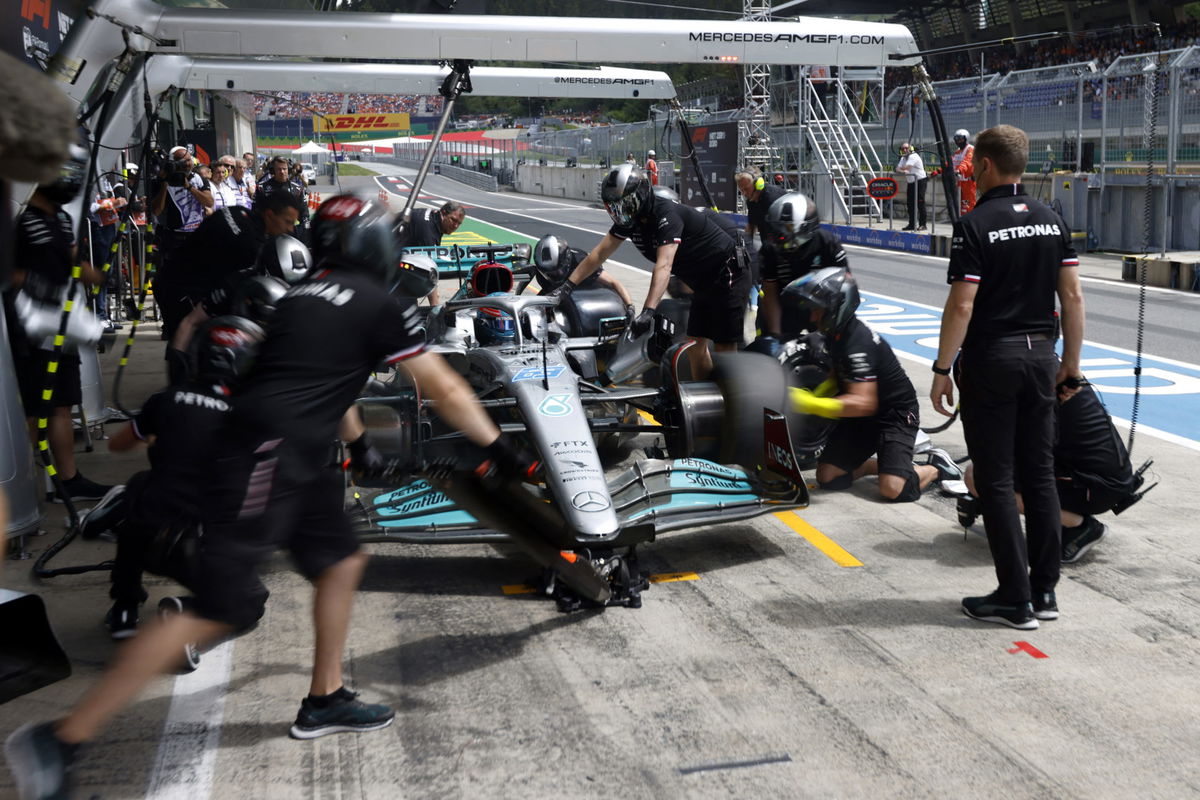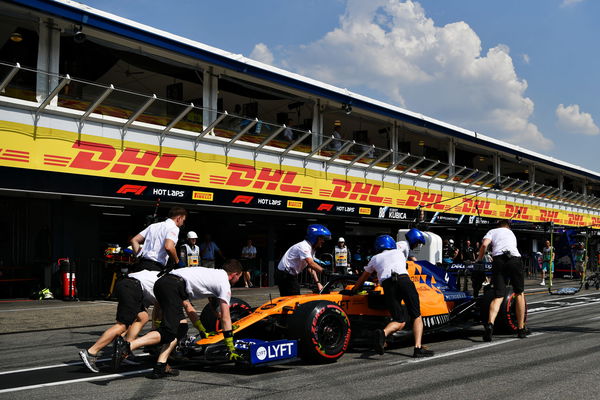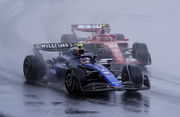
Reuters
Formula One F1 – Austrian Grand Prix – Red Bull Ring, Spielberg, Austria – July 9, 2022 Mercedes’ George Russell in the pits during practice REUTERS/Leonhard Foeger

Reuters
Formula One F1 – Austrian Grand Prix – Red Bull Ring, Spielberg, Austria – July 9, 2022 Mercedes’ George Russell in the pits during practice REUTERS/Leonhard Foeger
Motorsports, in general, are known for speed, without which the fun of the event gets reduced by a country mile. As for F1, it’s the same, or to some extent even more. Formula 1, in all formats, is a sport of speed. Be it the qualification, the sprint, or Sunday’s race, speed is ultimate.
Watch What’s Trending Now!
ADVERTISEMENT
The faster a car, the better it is for the constructor as a whole. However, an F1 car is only allowed to showcase its speed on the track under green flags, not anywhere else. While yellow flags require the car to slow down on the track, there is no definite speed limit like the one that exists in the pitlane. What is the F1 Pit speed limit, then?

Getty
HOCKENHEIM, GERMANY – JULY 26: Lando Norris of Great Britain and McLaren F1 is pushed back up the pitlane after he got stuck behind Nico Hulkenberg of Germany and Renault Sport F1 during practice for the F1 Grand Prix of Germany at Hockenheimring on July 26, 2019 in Hockenheim, Germany. (Photo by Dan Mullan/Getty Images)
Even though this sounds oxymoronic, the standard speed limit for an F1 car in a pitlane should not be above 60 kilometers to 80 kilometers per hour (37-49 mph), depending on the track. Disobeying the limit or exceeding it will incur a fine of 100 euros per kilometer crossed (in practice sessions).
ADVERTISEMENT
ADVERTISEMENT
Well, for an F1 car, the average speed is around 180 kilometers (111 mph), whereas the top speed usually attained is anything beyond 300 kilometers (186 mph). Limiting those cars to going under 60 kilometers (37 mph) in the pitlane is very important due to safety reasons. As the pitlane is usually packed with pit crews and officials, speeding there would not be a good idea.
ADVERTISEMENT
Throwback: When there was no Pit speed limit
F1 wasn’t like this since its inception. There was a time when there weren’t such rules, such as the speed limit in the pitlane. Speeding in the pitlane to get the tires changed was a part of the racing strategy until the 1990s. The F1 Pit speed limit was first trialed in 1993, followed by its introduction after the tragic 1994 San Marino Grand Prix.
READ MORE: 2022 F1 Regulations Dramatically Re-Ignite Christian Horner- Toto Wolff War
ADVERTISEMENT
Over the years, the speed limitations on the pit have become stricter. The 60-kilometer speed limit zone ends shortly after the last F1 team garage, close to the start/finish line. The drivers can only release the limiter and start to accelerate at that point.
Top Stories
Who Is Oscar Piastri’s Father, Chris Piastri? Co-Founder of Multibillion Dollar Automotive Company

Who Is Canadian F1 Billionaire Lawrence Stroll’s Daughter & Heiress Chloe Stroll?

3 Years After His Death, Niki Lauda’s Wife Brutally Disrespects Him to Initiate $32,000,000 Battle Against Own Children

Oscar Piastri Reveals How Father, Chris’ Contribution to $35 BN Giant Birthed His F1 Career

How F1’s 2026 Engine Rules Sound Alarm Bells for NASCAR and Others? – Explained

WATCH THIS STORY: Christian Horner Speaks Up on Possible Audi-Porsche 2026 F1 Partnership – “Would Be Very Easy…”
ADVERTISEMENT
ADVERTISEMENT
ADVERTISEMENT

